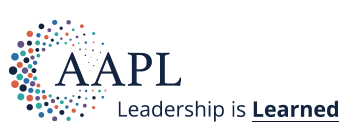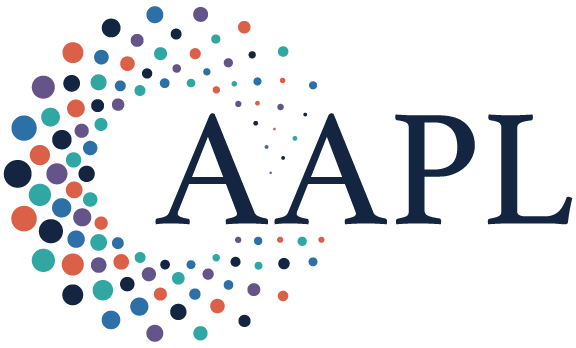Summary:
Research shows that disengaging from our jobs can impact our mental health, motivation, stress levels, responsiveness, and even cognitive function. Worse, withdrawal is self-perpetuating, triggering a troubling cycle that can be difficult to break.
If you’ve been feeling disconnected from your job recently, you’re not alone. The numbers are stark: More than half of U.S. workers feel disengaged from their jobs, creating substantial costs not only for their organizations but for their own careers and wellbeing.
While the causes of disengagement may vary, our response is remarkably consistent: We withdraw. This instinct, documented in organizational psychologist William Kahn’s pioneering research on employee engagement, is both common — and counterproductive. It works against our brain’s fundamental needs, affecting mental health, motivation, stress, responsiveness, and even cognitive function. Worse, withdrawal is self-perpetuating, triggering a troubling cycle that’s increasingly difficult to break.
Purposeful interactions — even brief ones — can interrupt the withdrawal spiral and reignite engagement. This isn’t about simply adding more meetings to your day; the key lies in the quality of your workplace interactions, not the quantity. Research by Robert Quinn and Gretchen Spreitzer demonstrates that even brief social exchanges can dramatically boost workplace engagement, and creative collaboration has been shown to increase social closeness.
If you’re looking to re-engage at work this year, these five small actions — drawn from our combined 40-plus years coaching and consulting to business leaders and corporate professionals — can help build meaningful connections throughout your day.
1. Initiate or join a collaborative project.
Melissa’s client Sarah*, a senior operations director known for her inspiring leadership, noticed herself withdrawing from her team, spending less time collaborating and more time in her office behind closed doors. She felt trapped in a cycle of exhaustion and avoidance, which only deepened her detachment.
Rather than letting this disengagement fester, she used January as a chance to reset and deliberately restructured her workdays to put collaboration first. She launched cross-functional problem-solving sessions and invited her team to take shared ownership of key projects. These small but intentional steps toward connection quickly rekindled her enthusiasm for work — and she noticed a difference in her team as well.
You can replicate this approach by:
Proposing a side project that requires cross-departmental input. (It could be as small as creating a shared document where people can contribute their favorite team-building activities for an offsite.)
Requesting an assignment to existing team initiatives, such as offering to be a test user for another team’s new process or tool.
Organizing informal working groups around shared organizational challenges.
2. Host a small brainstorming session.
Rick, a product development director at a global retail company and recent coaching client of Melissa’s, had always thrived in environments that encouraged team collaboration and idea sharing. However, as the demands of managing a large product portfolio grew, he found himself working independently to push decisions forward, leaving him increasingly isolated and disengaged.
After a spontaneous brainstorming session with two other peers on an innovative product idea left him feeling energized, he committed to adding more of these types of interactions into his work week.
The new year is an especially effective time to try out this small action, as colleagues will likely be returning to work refreshed and ready to engage. Some ideas to kick off a small brainstorm include:
Scheduling a 15-minute problem-solving session with a trusted peer
Running a low-pressure virtual “coffee chat” for idea sharing
Inviting cross-functional colleagues to a “rapid fire” ideation meeting
Experimenting with digital collaboration tools like Miro, Mural, or Zoom Whiteboard to capture ideas in real time for ongoing collaboration without scheduled meetings
3. Seek out peer input.
Rebecca’s client Megan ran a growing boutique design studio but was feeling isolated and stagnant after years of working alone. She decided to reach out to a fellow boutique owner to discuss pricing strategies. These brief interactions gave Megan a new perspective on scaling her studio without sacrificing quality, restored her sense of creative partnership, and reignited her enthusiasm for her work.
Sometimes, people outside of your immediate circle can offer insights that those closer to the work might miss. If you don’t typically seek input from others unless required to, you may be missing out on a powerful tool for both connection and growth.
You can seek out peer input by:
Asking a coworker to take a quick look at your client email draft before sending it
Inviting someone whose presentation style you admire to watch you practice for an upcoming meeting
Sharing your project timeline with a peer who’s good at spotting potential bottlenecks
Make sure you’re asking for input on a project where you have room to iterate. Look for a colleague who can offer fresh perspectives, and frame the request as an opportunity for mutual learning, with brief, focused feedback sessions. Not only can this improve the quality of your work, but it can shift your perspective on the task at hand.
4. Step away from your desk.
As her workload increased and deadlines loomed, Melissa’s client Sam, a senior director at a technology company, found herself eating lunch alone at her desk more often than not. She had fallen into a routine of staying at her desk and powering through. Noticing that she felt increasingly isolated and that her motivation had started to wane, Sam decided to step away from her desk for lunch. Inviting a couple colleagues to join her gave her an unexpected boost that carried through her day.
While organizing a lunch with colleagues might sound intimidating to someone deep in the withdrawal cycle, it can be a gentle and energizing way to feel like a part of something again. Being the organizer also allows you to tailor the gathering and attendees to your preferences, removing some of the discomfort that can come with networking.
In fact, studies have shown that casual interactions like shared meals create unique opportunities for relationship building that formal meetings can’t replicate. An added bonus: social time at work can help counteract the wintertime blahs, when the sun sets before we even leave work.
To break your desk-bound cycle, try:
Scheduling an informal lunch with colleagues either in or outside the office, with no agenda. You could send a casual message to two or three colleagues to start, saying something like,“I’m trying to break my desk lunch habit and thought it might be nice to grab lunch with a few colleagues next Tuesday. Would you be interested in joining? No agenda — just a chance to chat and take a proper lunch break. Feel free to invite another colleague if you’d like!”
Having a regular coffee break with different colleagues.
Going for a “walk-and talk” with a coworker to discuss a current challenge.
Push yourself to break away at least once a week. Even short social breaks can have an impact on your mental and emotional energy.
5. Seek out community.
If you’re a small-business owner or solopreneur who is working without the benefit of a team, consider joining a networking group or small-business focused community.
Rebecca’s client Andy, a consultant who noticed that he sometimes went a whole day without interacting with another human, joined a community of solo consultants. Being part of a larger network of business owners facing similar challenges gave him a built-in sounding board for new ideas and client struggles, as well as a place to celebrate wins. Most unexpectedly for Andy, he found himself partnering with other consultants on client projects, restoring a sense of camaraderie he hadn’t realized he’d been missing since going solo.
You can create a support network that combats the isolation of working solo and opens up new opportunities for growth and collaboration by:
Joining a networking group or business community.
Attending industry events or conferences.
Participating in online communities and forums with others in your field.
. . .
After dipping your toe in the water with the above tactics, take a moment to assess what worked and what didn’t. Which activities were the most energizing or enjoyable? What did you learn about yourself through this process? This will help you find ways to incorporate the most engaging activities into your normal routine year-round.
The new year provides the opportunity to re-engage at work after a period of psychological detachment. Purposeful micro-collaborations can decrease loneliness, break the withdrawal cycle and bring back your energy, creativity, and sense of purpose. The next time you notice yourself withdrawing at work, remember that it can be a self-perpetuating behavior that leads to further isolation. Instead, set an intention to lean into connection.
*Names have been changed throughout this article to protect privacy.
Copyright 2025 Harvard Business School Publishing Corporation. Distributed by The New York Times Syndicate.
Topics
Resilience
Self-Awareness
Comfort with Visibility
Related
Managing Your Team When the C-Suite Isn’t Providing Strategic DirectionLeadership Lessons From NapoleonNow Is the Time for CourageRecommended Reading
Motivations and Thinking Style
Managing Your Team When the C-Suite Isn’t Providing Strategic Direction
Motivations and Thinking Style
Leadership Lessons From Napoleon
Motivations and Thinking Style
Now Is the Time for Courage
Self-Management
Trust, Access, and Visibility
Self-Management
The Only Constant Is Change
Self-Management
The Best Leaders Edit What They Say Before They Say It


